Table of Contents
Updates of Lenovo’s top-tier ThinkPads are expected for later this year, and they’re not just the standard hardware updates, but actually address a few of their quirks and improve on certain aspects.
Both the ThinkPad X1 Carbon clamshell and the ThinkPad X1 Yoga convertible receive 8th gen Whiskey Lake processors, but also improved speakers, new screen options and exterior redesigns that lead to thinner profiles and lighter weight.
These updates come quite late imo, with the two lines expected to ship around June 2019, while other OEMs have been offering Whiskey Lake laptops for a few months already. However, a stated in a many of our other articles, Whiskey Lake is, for the most part, a minor platform upgrade, especially in thin-and-light chassis like these ones, but the other changes should make these products even more compelling than before.
Hopefully, Lenovo will also keep their quality-control in check this time around. Last year’s ThinkPad X1 Carbon was highly praised by reviewers, but retail models suffered from various inconsistencies in the keyboard, display and finishing quality, which are unacceptable in such premium and highly priced computers.
2019 ThinkPad X1 Carbon (7th generation)
Before we get in depth on all the updates, here’s how the 2019 and 2018 (6th gen) model compare in a quick specs-sheet.
| 2019 Lenovo X1 Carbon (7th Gen) | 2018 Lenovo X1 Carbon (6th Gen) | |
| Screen | 14.0 inch, FHD matte (400 nits), FHD touch (400 nits), FHD ePrivacy (400 nits), WQHD matte (300 nits), UHD 10-bit with HDR (500 nits) | 14.0 inch, FHD matte (300 nits), FHD touch (300 nits), WQHD matte (300 nits), WQHD glossy with HDR (500 nits) |
| Processor | up to Intel Whiskey Lake i7-8565U (4 cores, 8 threads @ 1.8-4.6GHz) | up to Intel Kaby Lake Refresh i7-8550U (4 cores, 8 threads @ 1.8-4.0GHz) |
| Video | UHD Graphics 620 (integrated) | UHD Graphics 620 (integrated) |
| Memory | up to 16GB LPDDR3-2133 (soldered, dual-channel) | up to 16GB LPDDR3-2133 (soldered, dual-channel) |
| Storage | 1x M.2 80 mm NVMe OPAL2, up to 2 TB | 1x M.2 80 mm NVMe OPAL2, up to 1 TB |
| Connectivity | Intel WiFi 9650 with Bluetooth 5.0 (?), Intel Ethernet Connection, optional WWAN | Intel WiFi 8265 with Bluetooth 4.2, Intel Ethernet Connection I219-V, optional WWAN |
| Ports | 2x USB-C Thunderbolt 3, 2x USB-A 3.1, HDMI 1.4(?), SIM/MicroSD, doc-port, headphone/mic, Lock | 2x USB-C Thunderbolt 3, 2x USB-A 3.1, HDMI 1.4b, SIM/MicroSD, doc-port, headphone/mic, Lock |
| Battery | 51 Wh, 65W power adapter (USB Type-C) | 57 Wh, 65W power adapter (USB Type-C) |
| Size | 323 ot 12.71″(W) x 217 x 8.54″(D) x 14.95 or 0.58″ mm (H) | 324 ot 12.73″(W) x 217 x 8.54″(D) x 15.95 or 0.62″ mm (H) |
| Weight | from 1.11 kg / 2.46 lbs(+ power supply) | from 1.13 kg /2.49 lbs (+356g power supply) |
| Extras | IR cameras with ThinkShutter, finger-sensor, quad speakers | IR cameras, finger-sensor, dual speakers |
Update: In the meantime, updated Lenovo ThinkPad X1 Carbon and X1 Yoga models are available, built on Intel 13th-gen specs.
What’s changed?
While the outer changes are subtle, the 2019 X1 Carbon is actually a redesign of the chassis used in the last years. It’s about the same footprint, but 1 mm thinner and marginally lighter.
Magnesium alloys and carbon-fiber/glass mixtures are still used for the shell, with a similar soft-touch finishing that hopefully won’t chip as easily. Having encountered the more recent ThinkPads X1 Extreme and P1 with similar builds, I’d say the new X1 Carbon won’t suffer from such issues this time around.
The 2019 X1 Carbon is no longer available in a Silver variant though, but instead in two black versions, one with the standard matte finishing, and another with a textured carbon-fiber weaved lid-cover, similar to what Dell’s been using on the XPS 13’s interior in recent years. Both keep the same simple interior. I’m pretty sure I prefer the all-around simpler variant, and given my experience with my XPS and past ThinkPads, both are going to be magnets for smudges and finger-oil.
The laptop’s internals were more significantly redesigned though, primarily to accommodate the most important exterior change: the new speaker system.
There’s a grill at the top of the keyboard now, which hides a set of front-facing speakers underneath, and they are supplemented by an extra set of “subwoofers” placed on the underbelly. That’s a much-welcomed change, given how sound has historically been a weakness of past Thinkpads.
The inner redesign however only leaves room for a smaller battery (51 vs 57 Wh), leads to some port-swapping around the sides and might also imply other changes we cannot predict at this point. The IO hasn’t suffered in this transition though, as the 2019 X1 Carbon keeps the same connectivity as the previous version, including support for some Lenovo mechanical docks and the two Thunderbolt3 slots. The wireless module will most likely be updated to one of the never generation Wave 2 options, with Bluetooth 5.0; wired Internet is still possible (with an external dongle that you’ll most likely have to buy separately ) and hopefully, optional WWAN is still available as well.
The 7th gen X1 Carbon also gets updated screens pretty much across the board, with brighter 400-nits panels for the lower-end FHD matte and touch options, as well as a UHD 10-bit panel with Dolby Vision HDR and 500-nits brightness as the top variant. My hopes go towards improved uniformity as well, as the FHD panels suffered from severe bleeding in the past, as well as improved craftsmanship that would eliminate the poorly aligned panels we’ve also seen on the 2018 model. As for that 10-bit panel, whether that’s really 10-bit or simulated 8bit with dithering like on other ThinkPads (like the P72 workstation), that’s something we’ll have to figure out in a future review.
As a side note, the ePrivacy screen choice refers to Lenovo’s new Think-Shutter camera cover that now also works with the IR cameras, while in the past it was only available on versions without the set of Hello cams.
I also wonder how will the Whiskey Lake hardware perform inside this thinner chassis. The i7-8550U inside the 6th gen X1 Carbon performed well once undervolted, but ran at 90+ degrees Celsius in continuous taxing loads, so I wouldn’t expect any significant gains for the i7-8565U, despite its theoretic ability to run at higher-clocks. We’ll see, hopefully, Lenovo didn’t mess up cooling with this redesign.
All in all, I’m pretty hyped about the 2019 ThinkPad X1 Carbon.
It improves on what was already one of the most versatile ultraportables of last year, with more recent hardware, better screens, and speakers. Unfortunately, the battery lost about 10% of its size in the process, but I guess it’s still on par with the competition. I’m definitely not a fan of this miniaturizing trend that everyone’s following these days, making computers thinner and thinner while sacrificing on features and overall experience in the process, but the X1 actually cuts off a lot less than others, and it’s not like I can do much about it anyway, so I have to accept it.
The biggest unknown around the new X1 Carbon still remains in the build-process and parts sourcing though. Like already mentioned, the 2018 X1 Carbon was highly praised by initial reviews, but people ran into various issues with the build, screen-quality or keyboards once they actually started buying them. Hopefully, Lenovo refined the process this time around, after all, this is their top-of-the-line ultraportable, but I’d still refrain from being an early buyer and keep an eye on Reddit and forums in the first weeks when these will eventually ship.
The ThinkPad X1 Carbon 7th-gen is expected in stores around June 2019, with prices starting at $1709 in the US.
2019 ThinkPad X1 Yoga (4th gen)
Again, let’s have a quick look at the specs sheet first.
| 2019 Lenovo X1 Yoga (4th Gen) | 2018 Lenovo X1 Yoga (3rd Gen) | |
| Screen | 14.0 inch, FHD touch (400 nits), FHD ePrivacy (400 nits), WQHD touch (300 nits), UHD touch with HDR (500 nits) | 14.0 inch, FHD touch (270 nits), WQHD touch (270 nits), WQHD touch with HDR (500 nits) |
| Processor | up to Intel Whiskey Lake i7-8565U (4 cores, 8 threads @ 1.8-4.6GHz) | up to Intel Kaby Lake Refresh i7-8550U (4 cores, 8 threads @ 1.8-4.0GHz) |
| Video | UHD Graphics 620 (integrated) | UHD Graphics 620 (integrated) |
| Memory | up to 16GB LPDDR3-2133 (soldered, dual-channel) | up to 16GB LPDDR3-2133 (soldered, dual-channel) |
| Storage | 1x M.2 80 mm NVMe OPAL2, up to 2 TB | 1x M.2 80 mm NVMe OPAL2, up to 1 TB |
| Connectivity | Intel WiFi 9650 with Bluetooth 5.0 (?), Intel Ethernet Connection, optional WWAN | Intel WiFi 8265 with Bluetooth 4.2, Intel Ethernet Connection I219-V, optional WWAN |
| Ports | 2x USB-C Thunderbolt 3, 2x USB-A 3.1, HDMI 1.4, SIM/MicroSD, doc-port, headphone/mic, Lock | 2x USB-C Thunderbolt 3, 2x USB-A 3.1, HDMI 1.4, SIM/MicroSD, headphone/mic, Lock |
| Battery | 51 Wh, 65W power adapter (USB Type-C) | 54 Wh, 65W power adapter (USB Type-C) |
| Size | 323 ot 12.71″(W) x 218 x 8.58″(D) x 15.02 or 0.59″ mm (H) | 333 ot 13.11″(W) x 229 x 9.01″(D) x 17.05 or 0.67″ mm (H) |
| Weight | from 1.4 kg / 3.1 lbs(+ power supply) | from 1.4 kg /3.1 lbs (+356g power supply) |
| Extras | IR cameras with ThinkShutter, finger-sensor, quad speakers | IR cameras, finger-sensor, dual speakers |
The X1 Yoga shares most design aspects and characteristics with the X1 Carbon this time around and is, in fact, a more significant update of last year’s model, with a smaller footprint, thinner bezels around the screen and a thinner profile. It’s still nonetheless a hybrid, with a fully 360-degrees convertible screen. See the clip below for more details.
It gets the hardware bump to Intel’s Whiskey Lake platforms, the brighter screen options and the UHD HDR panel, the same 51 Wh battery, the same quad-speaker system, the same keyboard, and a very similar IO. Despite all these, Lenovo still managed to squeeze a stylus inside, and while last year’s model did not get the ThinkPad doc-port, the updated version does, on the left edge, just like on the X1 Carbon.
Aside from the obvious size differences, the 2019 ThinkPad Yoga is now entirely made out of machined milled aluminum, so no longer gets the magnesium/plastic body we’re normally seeing on other ThinkPads. That means it’s only available in a dark-silver color scheme, and given how Lenovo’s been using aluminum shells on their standard Yoga devices in the past, I don’t think this transition will have any effect on the chassis’s overall strength and rigidity. Metal does feel different to the touch, so don’t expect this to feel like a traditional ThinkPad, but more like a MacBook/Yoga device.
All in all, the 2019 X1 Yoga is a major update of last year’s generation and I’d expect to catch a lot of attention later in the year when shipping. Just like the Carbon variant, it’s scheduled for June 2019, with prices starting at $1929.
Stay tuned for our future reviews of both the ThinkPad X1 Carbon and X1 Yoga 2019 updates, and in the meantime get in touch in the comments section if you have any feedback or questions.

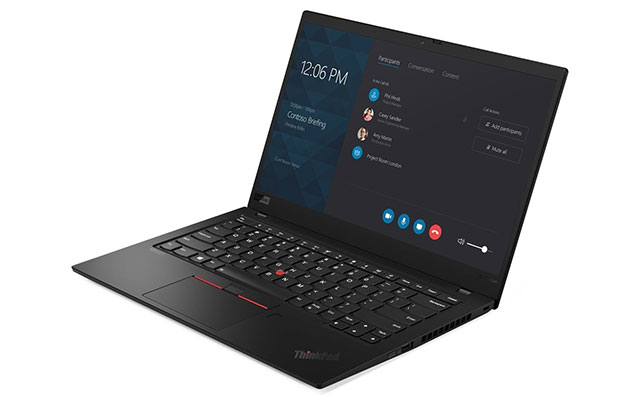
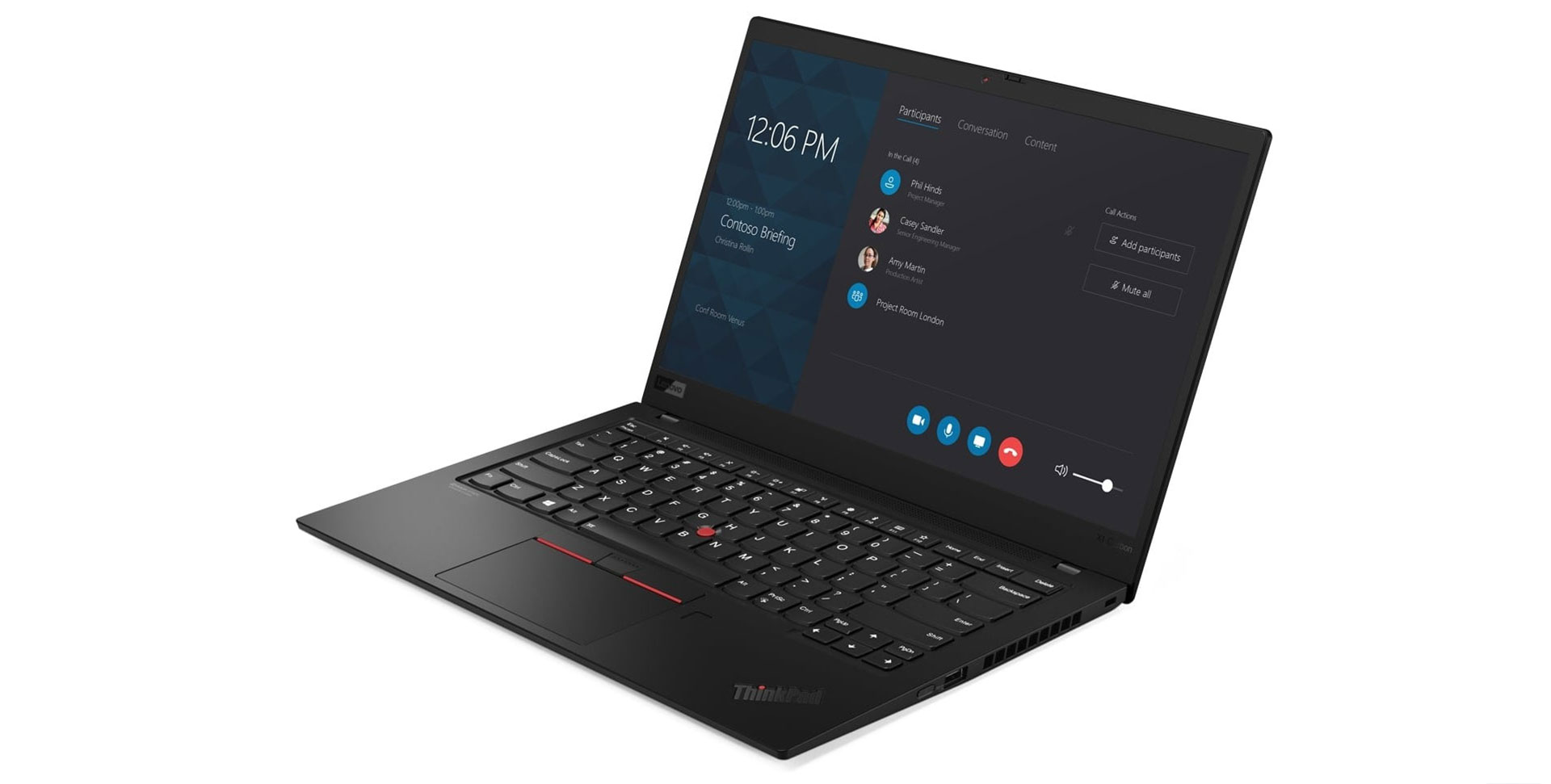
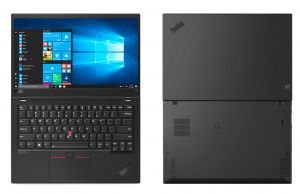
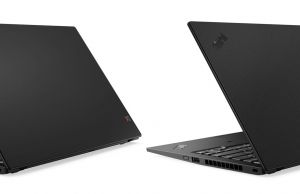
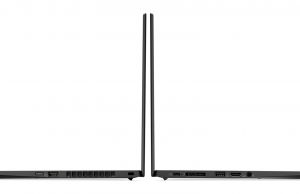
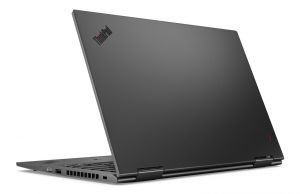
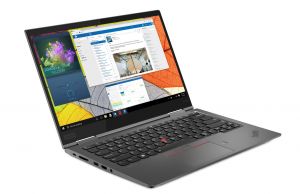
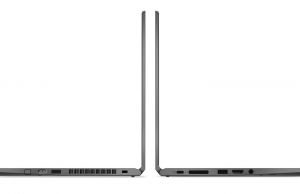
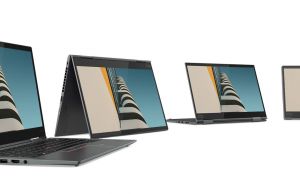

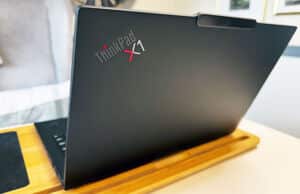
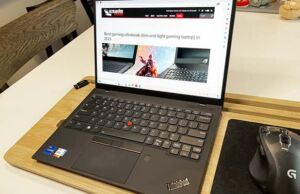
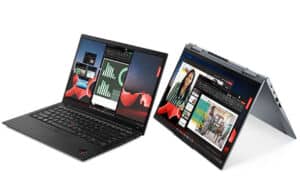
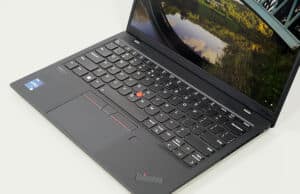
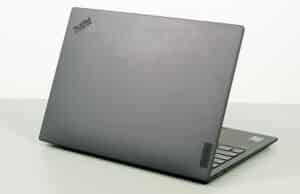
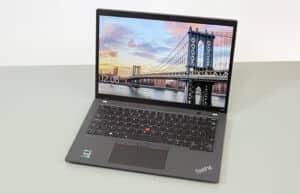




Nexus7
February 16, 2019 at 6:53 am
The world has moved on to thin bezels, and fitting 15" screens in formerly 14" chassis. Manufacturers such as Lenovo are too timid to make big changes, so they've stuck with 14" screens – 14" and WQHD – what is the point?
Stefan
April 8, 2019 at 1:49 am
@Nexus7: The world has moved on to fitting 14" screens in formerly 13" chassis. The X1 being an Ultraportable most target users prefer a smaller size with the sufficiently big 14" screen rather than the same size and weight with a bigger screen. Check out other professional portables from e.g. Apple.
For those preferring a bigger screen there is still the X1 extreme or an external display
Steve
June 6, 2019 at 5:55 am
While it's nice they're improving the speakers, as it's always nice to have better sound, this is first and foremost a business machine, meant for working more so than playing. That means battery life is crucial. And even before, the Carbon's battery life was mediocre, faring slightly worse than many competitors and much worse than HP. So I think it was a really dumb decision on their part to reduce the capacity for the sake of the speakers, or for decreased size/weight for that matter. Like many people, I get a laptop for portability; otherwise, I'd use my desktop. That means it should be compact and lightweight, but it also means it should last a long time on battery, ideally a couple days of heavy use. HP has managed to do it, with multiple sites showing very long times, generally 15+ hours (vs the ~15 hours quoted by companies such as Lenovo that turn out to be more like 7-8 hours of real-life usage), so I can't understand why others, including Lenovo, can't manage to do it as well.
I love the Trackpoint, and want a Lenovo for that and for the keyboard (if other laptops had it, which they should, and had keyboards more like Lenovo's, I'd much prefer an HP or a Dell over Lenovo), but I can't justify twice the cost and half the battery life just for that and a better keyboard. Lenovo needs to start making longer-lasting laptops with better QC (I was going to buy a 2018 Carbon until I saw all the issues they were having and then read about the malware they put on their laptops) or I suspect they're going to lose more and more sales to the competition.
And to Andrei, as for the statement in the article that you're "definitely not a fan of this miniaturizing trend…it’s not like I can do much about it anyway, so I have to accept it," while that's true to an extent, I wouldn't say you can't do anything about it. You're the EIC of a site that reviews laptops. While you did more than some sites I've seen in pointing out such a negative point with the laptop (smaller battery), even mentioning it a couple times, I'd argue that you can, and should, make a much bigger deal about it. Don't just briefly mention it in the middle of a couple paragraphs, make a big deal of it. This can be done via a pros/cons section, by scoring laptops and docking significant points if they can't do, arguably, their main function of lasting a long time on battery due to such design decisions, and even recommending against them because of it. And if you communicate with the manufacturers at all, let them know these things, so they are forced to realize those decisions are resulting in negative reviews. IOW, use your position to help push manufacturers into rethinking things.
Andrei Girbea
June 6, 2019 at 10:00 am
Hi Steve. Thanks for your thoughts and suggestions.
I know that some manufacturers pay attention to our reviews and our findings, and they've addressed issues based on our (and other reviewers, of course) complaints. Unfortunately, I don't think Lenovo is one of them, we're just a small fish, and unless the bigger venues point out these issues and problems, I don't think they'll do much in addressing them. Hence the "not much I can do about it" statement. I'm just being realistic, but hey, we're here and we'll keep on trying to push for better products with our articles and opinions.
As a side note, keep in mind this article is just a preview, so I mentioned the decrease in the battery size as a concern, but whether that has an actual impact on everyday battery life, that's something we'll have to look into once we get to review the product.
Donald Gillies
August 6, 2019 at 3:05 am
Whatever Apple does, they copy it. PERIOD. Apple makes a brighter display and better speakers? COPY IT !!
Larry Garber
June 10, 2019 at 6:05 am
Excellent pre-review. I just checked my calendar and it's June already. Any rumors regarding when in June or whether there are delays in the release of the X1 Yoga? Thanks!
Andrei Girbea
June 10, 2019 at 12:02 pm
Not yet, but I'm keeping my eyes peeled for more info and hopefully will get review units in the near future, for more in-depth impressions
Robert V
June 10, 2019 at 10:23 pm
Their current sale ends on June 12th. Maybe shortly after?
Andrei Girbea
June 11, 2019 at 11:51 am
We'll just have to wait and see, unfortunately, I don't have any inside information at Lenovo
Larry Garber
June 18, 2019 at 6:50 pm
…and it's for sale!
directdial.com/20QF000CUS.html
Dmitry
July 30, 2019 at 10:06 pm
This is really,really bad. Main: the performance of the 7th generation with Intel i5 processor with 8265u is 30% less compared to the cabon x1 6th generation. Settings do not help. In my tests intel i7 8650g gains 9200 points, i5 8250g – only 5600 points, after 5 seconds is reduced to 4200 points, the frequency is reduced to 1800 MHz. This is a common test of the archiver. Opening the screen at an angle of 140 degrees – the display cover rubs against the table, the paint is erased from the end. Keyboard – became much worse, the course is reduced, the smoothness of pressing disappeared. No different from the faceless Dell xps keyboard. The appearance of the keyboard is a copy of dell xps. This is unacceptable – the elegance of thinkpad is lost. The holes for the speakers much collect dust.
Supo Orimogunje
February 27, 2020 at 12:08 pm
My Lenovo X1 Yoga 4th Generation with full HD screen only lasts 3 hours just doing basic web browsing, and emails, that's a far-cry from 15 hours claimed by the manufacturer! I can't believe they can lie so blatantly as I was expecting maybe half of that, but 3 hours? That was a surprise. Brightness at 60%, battery save on